Abstract
Background: A good command of algebra concepts is vital for proficiency and success in higher mathematics and related disciplines. However, students are beset by conceptual challenges which require consistent attention because errors and misconceptions hinder learning and understanding.
Aim: With the aim of mitigating the problem of errors and misconceptions in school mathematics learning, a qualitative descriptive-interpretative research study was conducted.
Setting: The study involved 30 ordinary-level learners purposively sampled from one rural boarding high school in Zimbabwe.
Methods: Focus group discussions in which learners scrutinised illustrative sketches of erroneous worked examples were used as means to raise informants’ awareness of common errors and misconceptions in school algebra. Task-based interviews were used to elicit data in the form of participants’ written responses to tasks involving school algebra concepts. Content analysis informed by Biggs and Collis’ model and Kiat’s taxonomy of errors was applied to the textual data.
Results: With respect to basic ideas in algebra such as notions of coefficients, operators and variables and simplifying algebraic fractions, Grade 11 learners reached the extra-extended and relational levels of the SOLO model and solutions were free from conceptual and procedural areas. With regard to solving quadratic equations, lower levels of the SOLO model manifested with solution attempts marred with conceptual errors.
Conclusion: It can be concluded that error analysis has a potential to mitigate the problem of errors and misconception among Grade 11 learners depending on the nature of content involved.
Contribution: These findings have important implications for mathematics education and research in school algebra in the sense that it has contributed to efforts intended to find strategies that can provide solutions to the persistent problem of errors and misconceptions in mathematics education.
Keywords: error analysis; cognitive dissonance; conceptual change; errors and misconceptions; learning outcomes.
Introduction
Although deep learning and problem-solving in algebra were found to lead to emotionally rich experiences among learners, learners were, however, found by Adelman (2006) to have a limited conception of algebra and continue to struggle with the learning of algebra concepts. Learners’ struggles with algebra often lead to confusion which cripples the learning process. During such situations of confusion, learners experience impasses as they do not know how to proceed when attempting to solve tasks. Furthermore, learners’ confusion often manifests in the form of errors, which are a result of misconceptions. An error is a deviation from a correct solution (Luneta & Makonye 2010). In other words, errors are inaccuracies that result from either a lapse in concentration or from a misunderstanding of concept(s). Errors that emanate from lapses in concentration are referred to as slips or mistakes, and these can be deliberately corrected by the learner. According to Herholdt and Sapire (2014), slips are random deviations in declarative knowledge which do not indicate systematic misconceptions. An error occurs when a student believes a false concept as a true concept (Msomi & Bansisal 2022). For example, in school mathematics, it is often the case that learners misconstrue the concept of the difference of two squares as follows: x2 – y2 = (x – y)2. Booth et al. (2014) report that holding misconceptions makes learners prone to committing certain errors that are detrimental to mathematical achievement. Ling, Shahrill and Tan (2016) posit that errors and misconceptions hinder understanding and learning in addition to interfering with problem-solving. In consequence, Fumador and Agyei (2018) suggest that studies that seek to mitigate errors and misconceptions are vital.
The proliferation of literature on errors and misconceptions in mathematics education has seen much emphasis on sources of errors and their possible causes as well as categorisation of errors and misconceptions (Iddrissa, Abukari & Boakiye 2017; Kiat 2005; Koch 2005). Few studies have focused on how errors and misconceptions can be ameliorated. Furthermore, it is important to note that, for many years, pedagogy in algebra has relied heavily on presenting correctly worked example exercises as models for learners to follow when doing mathematics (Rushton 2018). In recent years, incorrect worked example exercises have been employed in mathematics education pedagogy for the purpose of student-conducted error analysis (e.g. Tabassum 2022). According to Rushton (2018), error analysis consists of being presented with a problem statement with steps leading to the solution in which one or more of such steps are incorrect. Große and Renkl (2007) describe error analysis as involving situations in which learners study errors in their own work with the intent to develop explanations for those errors. In other words, error analysis is a type of assessment that seeks to provide a justification as to why learners commit such errors and also account for such misapprehensions (Tabassum 2022). Justifying both erroneous and correct worked example exercises is more beneficial than focusing only on correct worked examples (Große & Renkl 2007).
The argument is that introducing erroneous worked examples in the learning process can force learners to reflect on what they know and then generate clearer and more complete explanations for their solutions (Rushton 2018). In addition, incorrect knowledge induces cognitive conflicts which when resolved culminate in coherent knowledge pieces (Mathaba & Bayaga 2021). Hence, this study seeks to establish the extent to which common errors and misconceptions among learners in algebra can be mitigated by increasing students’ awareness of those misconceptions through learner-conducted error analysis. Error analysis provides opportunities for deepening learners’ understanding of concepts; therefore, it is an important component of the learning process (Msomi & Bansilal 2021).
We argue that teachers and mathematics educators need to correctly interpret learners’ errors and misconceptions because certain errors and misconceptions are quite persistent and difficult to deal with (Brodie 2014). Further, errors and misconceptions in algebra occur across different contexts and levels thereby interfering severely with learning. For instance, some errors made during secondary school mathematics learning persist even into post-secondary schooling level. Therefore, there is a dire need for research into how the problem of errors and misconceptions can be mitigated. Employing error analysis can generate ideas that help find ways that support learners’ efforts to develop a proper conceptualisation of school algebra. We reiterate that misconceptions and errors need to be studied in great depth at school level to ameliorate this challenge before it filters into tertiary mathematics. Thus, the current study is conceptualised around the assumption that errors and misconceptions can serve as a point of departure in revealing possible ways of remediation in algebra.
Statement of the problem
Errors and misconceptions continue to interfere with learning and understanding of algebra (Fumador & Agyei 2018; Makonye & Stepwell 2016). Chow and Treagust (2013) write that students are beset by conceptual difficulties in algebra. Students’ errors and misconceptions are usually persistent unless there is an intervention pedagogically (Sarwadi & Sahrill 2014). Many studies (e.g. Aydin-Guc & Aygun 2021; Egodawatte 2011; Seng 2011) documented the kinds of errors and misconceptions that characterise students’ learning of algebra. Examples of errors include the deletion error whereby expressions such as 4x + 7 = ν + 4 can yield x + 7 = ν, in which case the student would have equated 4x – 4 to x. The other inverse error is also common among learners where for instance, the linear equation 5x = 2 becomes x = 2 – 5. In this example, the additive inverse would have been used instead of the multiplicative inverse. Despite numerous efforts to understand the types and causes of errors, there is a scarcity of studies into how the persistent nagging issue of errors and misconceptions can be lessened. For instance, reporting their study Aydin-Guc and Aygun (2021) wrote: ‘… [T]he misconceptions that participant students had about algebraic expressions were determined and no intervention was made to the existing situations’ (p. 1110). If so then, a search for ways of mitigating errors and misconceptions is vital and hence, the current study therefore, responds to calls for more studies (e.g. Chow 2011; Ling, Shahrill & Tan 2016; Matzin & Shahrill 2015) that seek to find ways of mitigating the problem of rampant errors and misconceptions in school algebra.
To emphasise the need to intervene in the problem of errors and misconceptions in mathematics education, Hiebert and Carpenter (1992) write:
[U]nless students are forced to confront explicitly the conflict between their misconceptions and the scientific principles they have learned, the connections may never be made, the misconceptions and the scientific principles may coexist as separate islands of knowledge. (p. 89)
From this quote, we infer the need to confront errors and misconceptions because ‘a child’s errors are actually natural steps to understanding’ (Brooks 1993:83). So in the current study, it was envisaged that error analysis would in turn increase students’ awareness of their common errors and misconceptions (Stavrou 2014). Stavrou employed this strategy with undergraduate students in the area of mathematical proof at undergraduate level. The argument is that errors can be used as a point of departure with respect to discussions aimed at promoting correct conceptions of algebra concepts. This is because analysing errors and misconceptions may reveal flaws in students’ problem-solving processes, which in turn can provide clues as to how such flaws can be addressed (Sarwadi & Sahrill 2014). Thus, employing error analysis in the learning process can lead to the formation of accurate conceptions of algebra content by students (Große & Renkl 2007). Hence, the current study seeks to determine whether raising learners’ awareness through error analysis can mitigate this challenge in school algebra. Consequently, we posed and addressed the following research question.
Research question
To what extent can error analysis mitigate errors and misconceptions among Grade 11 learners?
Objectives and significance of the study
The study seeks to determine whether error analysis can mitigate the problem of learners’ misconceptions in school algebra. In other words, the intent of this intervention study is to evaluate the extent to which error analysis can contribute to efforts directed at improving the learning of school algebra. Such efforts can help foster a strong subject content command among learners. According to Mathaba and Bayanga (2021), when learners lack understanding of a concept, this could lead to errors such as failing to recognise the correct formula which will ultimately lead to a wrong solution. Hence, errors and misconceptions have a strong tendency to affect the learning of mathematics and other related disciplines (Makonye & Stepwell 2016). It can thus be argued that mitigating errors and misconceptions in school mathematics enhances deep algebraic understanding and proficiency.
Theoretical framing
Underpinnings of the current study are notions of misconceptions and errors, the constructs of self-explanation, cognitive dissonance and the closely related concept of conceptual change. Accordingly, we present ideas in our theoretical framework under the following headings.
Errors and misconceptions
Piagetian theory of cognitive development asserts that learners have in-built cognitive structures for understanding and responding to experiences in their environment. Construction of knowledge is based on their pre-existing knowledge constructs or schemata. When confronted with novel situations (new content), new content filters through the learner’s cognitive structures. If there is harmony between prior knowledge and new knowledge elements then there is assimilation. This is the desired learning path. However, sometimes prior knowledge may not be in harmony with new knowledge. In such cases, discrepancies or gaps will be established between new and prior knowledge leading to alternative conceptions, ‘misconceptions’ (Gagatsis & Kyriakides 2000). Hence, prior knowledge can facilitate, inhibit or transform learning.
According to Legukto (2008), errors and misconceptions are caused by gaps in conception that threaten the learners’ construction of knowledge. Legukto elaborates that errors and misconceptions are a result of applying schemata or alternative conceptions (misconceptions) to mathematical situations in an inapplicable fashion. For instance, a learner may be required to factorise the expression f(v) = 3v2 – 12. Instead of expressing f(v) in factor form as f(v) = 3(v + 2)(v – 2), a learner can then proceed to solve the equation 3v2 – 12 = 0 to get the solutions v = ±2. In this case, a learner has an alternative conception (misconception) of the concept of factorisation that the learner associates the process of solving an equation. So, this misconception will lead to the error of getting solutions instead of finding factors. We note that the converse of the scenario presented is possible, that is, learners can factorise when they are supposed to find solutions of a given equation.
We now examine thoughts shared by the mathematics education community with regard to the problem of errors and misconceptions during learning. Firstly, the current thinking about the mathematical discourse embraces the concept of a misconception as an important component of the learning process. Secondly, Booth and Koedinger (2008) note that misconceptions held by learners can give an accurate prediction of the kinds of errors made by learners during problem-solving. In other words, errors are a product of misconceptions that are consistent with the learner’s conceptual frameworks (Lourens & Molefe 2011). In addition, a study by Durkin and Rittle-Johnson (2015) has shown that errors made with high confidence during problem-solving are more difficult to overcome with instruction as they emanate from strongly held misconceptions.
Theoretical considerations for the intervention study
In this section, we consider ideas drawn from literature that informed our decisions and actions during our implementation of error analysis with intent to ameliorate the problem of errors and misconceptions among Grade 11 learners. Firstly, we drew Roy and Chi’s (2005) principle of self-explanation. Rio and Chi explain that self-explanation involves probing learners to express their thoughts while studying some content or solving a problem. Roy and Chi articulate several benefits associated with asking learners to explain their thinking while engaging with tasks. One major benefit of verbal utterances is that they improve the degree to which learners integrate new knowledge with prior knowledge. Another benefit of self-explanation is that it enhances the learning process as learners notice gaps in their conceptualisations and can then draw inferences to fill the gaps identified. Finally, verbal narrations of one’s thinking lead to the illumination of ideas generated thereby making the new knowledge constructed explicitly. Next, we focus on the concept of cognitive dissonance.
The term cognitive dissonance is a psychological construct proposed by Festinger (1957). According to Festinger, humans naturally seek consistency between their beliefs and reality observed in the world. In the context of this study, the term ‘learner’s beliefs’ is used to capture a collection of learners’ met-befores (elements of prior knowledge) with respect to concepts involved in school algebra (Ndemo, Mtetwa & Zindi 2017; Tall 2008). The phrase ‘reality observed in the world’ refers to conceptions of algebra concepts shared by the community of mathematicians. If learners are confronted with new knowledge and there is a clash between their beliefs and reality then cognitive dissonance arises. Graesser (2009) describes cognitive dissonance as confusion that is caused by lack of conformity between one’s beliefs and reality. This confusion leads to an unpleasant feeling and a drive to resolve the discrepancy. By resolving the discrepancy, we mean that learners will strive to make sense of the differences between the new knowledge being confronted and their prior knowledge in order to establish a harmonious state. A teaching grounded in the concept of cognitive is the cognitive conflict teaching strategy which focuses on destabilising a learner’s confidence through the presentation of contradictory experiences (Fumador & Agyei 2018).
Yet another construct that informed the current study is the notion called conceptual change. Jonassen and Kim (2010) define conceptual change as when learners change their understanding of concepts and the conceptual frameworks that encompass those concepts. In this study, we followed Dhindsa and Anderson’s (2004) interpretation of conceptual change as a context appropriate change in breadth and composition of conceptual knowledge occasioned by challenges which force learners to rethink their understandings based on evidence from experience. The term ‘evidence from experience’ in Dhindsa and Anderson’s interpretation of conceptual change refers to students’ experiences with erroneous tasks presented by researchers. We anticipated causing conceptual change through error analysis during focus group discussions. The connection between the constructs discussed here is that cognitive dissonance set up by a lack of harmony between new and prior knowledge can lead to alternative conceptions (misconceptions) which would be revealed through the self-explanation principle when learners are probed. Conversely, if there is harmony between new and old pieces of knowledge then conceptual change will be established in the mind of the learner.
The SOLO model and Kiat’s (2005) categorisation of errors
The abbreviation SOLO stands for Structure of Observed Learning Outcome. The SOLO model developed by Briggs and Collis provides five hierarchical thinking levels. According to Mathaba and Bayaga (2021), the SOLO model is characterised by five structural levels:
- Pre-structure level (P): meaning no thought or no response. The P level corresponds to level 1 of Newman’s (1977) model of error analysis model at which learners are anticipated to recognise underlying ideas involved in the problem at stake (Tabassum 2022).
- One-structure level (OS): meaning little thinking exhibited. Most aspects of the response at the one-structure level are not related to the correct solution. Similarly, the OS level corresponds to Newman’s level 2 of error analysis whereby learners are expected to display basic comprehension of the problem (Tabassum 2022).
- Many-structure level (MS): more thought shown by the learner who would have attempted the problem. Most aspects of the attempted solution are related to the correct answer. The MS level corresponds to Newman’s (1977) level 3 at which learners should transform ideas into mathematical operations.
- Relational structure level (R): Mathaba and Bayaga (2021) describe this level as one that reveals much thought meaning a correct answer would have been produced.
- Extra-extended level of the learning outcome (E): The same authors describe this level as one that represents exceptional responses.
In the context of the current study with a focus on mitigating errors and misconceptions through error analysis, we were keen to determine whether there could be responses at relational (R) and the extra-extended (E) levels. Compared to Newman’s model of error analysis, the E structural level corresponds to the fifth level whereby learners may even reflect on meaning of answers obtained. Because the study involved errors and misconceptions, the researchers considered it important to examine the categories of errors. For the purpose of the current study, Kiat’s (2005) classification was seen to be appropriate. Kiat classified errors as conceptual, procedural and technical errors. Conceptual errors are those related to learners’ misunderstanding or misinterpretation of concepts. Arslan (2010) writes that conceptual errors emanate from learning styles that do not involve understanding of concepts and relations between them. Conceptual errors are similar to what Koch (2005) refers as problem-solving-related errors. Kiat (2005) defines procedural errors as errors that arise while a learner tries to carry out a procedure having grasped the main concepts behind the problem task. Procedural errors, alternatively referred as instrumental or mechanical errors, are because of a lack of skills in executing the algorithm flexibly and appropriately. Finally, Kiat defines technical errors as errors caused by slips or silly mistakes displayed by learners. These are random errors in declarative or procedural knowledge that do not indicate systematic errors (Herholdt & Sapire 2014).
Research methods
Research design
The intervention study adopted a descriptive interpretative approach that employed a phenomenological research design. In essence, a phenomenological study involves examining a phenomenon through the voice of people who experienced it (Creswell 2014; Maxwell 2013). Neubaeur, Witkop and Varpio (2019) define phenomenology as a design that seeks to describe the essence of a phenomenon from the perspective of those who have experienced it. The goal of a phenomenological study as articulated by Neubaeur et al. (2019) is to ‘describe the meaning of this experience – both in terms of what was experienced and how it was experienced’ (p. 91). In the context of the current study, the goal was to understand how error analysis, the study of erroneous worked example exercises by learners, would have impacted on their mathematical proficiency in algebra. We reiterate that error analysis is concerned with pervasive errors or ‘bugs’ which learners make based on their lack of conceptual or procedural understanding of concepts pertinent to a given task (Herholdt & Sapire 2014). To develop a picture of what and how error analysis influenced learners’ conceptions of algebra concepts, the learners were engaged in discussions in which they would identify errors and then suggest how they could fix them.
Population and sampling
The target population consisted of all 240 (Grade 11) learners at one selected co-education boarding secondary school in Masvingo province. Firstly, we applied purposive sampling technique to access Grade 11 learners. Maxwell (1996) in Taherdoost (2016) defines purposive sampling as a strategy in which particular settings, persons or events are selected to provide important information that cannot be obtained from other choices. Palinkas et al. (2015) describe purposive sampling as involving identifying and selecting individuals that are especially knowledgeable or experienced with the phenomenon of interest. In the context of this study, the Grade 11 learners warrant inclusion by virtue of their knowledge and experiences with school algebra. The learners had covered secondary school algebra and had the necessary background information in this domain. We then used simple random sampling to draw 30 from 240 Grade 11 learners. Being a phenomenological research study, the intent was to generate useful insights with regard to how the concept of error analysis would mitigate the problem of errors and misconceptions in school algebra. Being a qualitative study, we did not aim to generalise our findings. Hence, we applied a simple random sampling technique to select only 12.5% (30 out 240) Grade 11 for the purpose of developing an in-depth understanding phenomenon of interest, that is, ameliorations of learners’ errors and misconceptions through error analysis.
Intervention efforts
From the random sample of 30 students, 6 groups each comprising 5 members were formed as follows. Thirty identical pieces of paper were produced and of these, five were labelled A, five with letter B, five labelled C, five with letter D, five with E and five labelled F. The pieces of paper were placed in a hat and shuffled. Thirty students then took turns to pick pieces of paper from the hat resulting in six groups each with five members. To stimulate the discussion of the kinds of errors and misconceptions, the researcher (first author) used PowerPoint to present slides bearing the illustrative sketches of the erroneous worked examples and correct worked examples. Participants were requested to study the slide and comment on the solution attempt. The researcher then led a whole class discussion of errors and misconceptions shown on the slide. The researcher then distributed sheets of paper with illustrative sketches to the six groups. Students were requested, in their respective groups, to study and comment on the solutions presented. They were asked to justify the truth or falsity of the illustrative sketches. Researcher moved around the groups to check on students’ progress. Each group then chose a member who led a chalkboard demonstration of the observations made by students from each illustrative sketch. We leveraged on ideas from the Theoretical Framework in the following manner.
Consistent with Rushton (2021) and Msomi and Bansilal’s (2021) conception of error analysis, we presented learners with incorrect worked example exercises and instructed them to scrutinise and describe errors identified. In addition, Grade 11 learners were asked to suggest how they could fix the errors. One way of promoting cognitive dissonance is through the presentation of errors for learners to consider and study (Herholdt & Sapire 2014). Learning from errors is effective as it prompts learners to identify features of problems that make the demonstrated procedure incorrect, which helps learners correct their own misconceptions and errors. We leveraged on this advantage of studying and explaining errors by employing the self-explanation principle to encourage learners to justify why illustrated solution attempts are wrong (Siegler 2002). Furthermore, following Siegler, we requested learners to explain why it is less likely that they will not make use of that procedure again themselves when solving problems. Explaining correct and incorrect examples enhances conceptual understanding thereby decreasing learners’ misconceptions (Durkin & Rittle-Johnson 2012).
Focus group discussions were engaged in to examine the kinds of misconceptions made. Focus group discussions were held in the afternoon after normal school sessions as had been agreed upon with the headmaster and the head of the mathematics division. Such a measure was intended to avoid interfering with school lessons. Following Stols, Ono and Rogan (2015), we asked learners to comment on the illustrative sketches of solution attempts by participants involved in the master’s degree research project. The first author could intervene when participants experienced impasses and did not know how to proceed and/or when they sought clarifications on illustrative sketches displayed; otherwise, learners took a leading role in the discussions of errors and misconceptions discerned from the illustrative solution attempts. We now reproduce some of the illustrative solution attempts examined by the focus groups.
Task 1 (Figure 1): Given that 2x + 5 = 15, write down (a) the variable,
…………………
 |
FIGURE 1: Task 1: Worked example for Focus Group Discussions. |
|
(d) coefficient of x.
Task 1 examined basic ideas in school algebra. Basic ideas include the notion of a variable, the concepts of a coefficient and term. Some of the illustrative sketches discussed are shown.
Participants pointed out that the variable is x instead of 2x as shown. Group discussions also pointed out that the coefficient of x is 2 and not 2x as written.
Task 2 (Figure 2 and 3): Simplify as far as possible (a) ……………….,
(b) 6x – 9y + 10x,
(c) –3(2x – 5y)
 |
FIGURE 2: Task 2: Illustrative sketch discussed in groups. |
|
 |
FIGURE 3: Task 2: Erroneous example for Focus Group Discussions. |
|
Learners in their groups also considered an illustrative sketch shown.
The illustrative sketch reveals that the learner was not able to identify like terms in order to simplify 6x – 9y + 10x. In this case, the learner simplified unlike terms. Group discussions focused on these crucial ideas whereby the first author emphasised the need to add or subtract coefficients in expressions involving like terms otherwise expressions consisting of unlike terms should not be simplified. With respect to item (c) of Task 2, while learners demonstrated an appropriate conception of the distributive property to, –3(2x – 5y), a weak conception of the idea that (–a).(–b) = ab led to the error shown.
Task 3 (Figure 4): Simplify the expression:  . .
 |
FIGURE 4: Task 3: Illustrative sketch for Focus Group Discussion. |
|
Focus groups noted that in simplifying  , the expected answer was , the expected answer was  . Groups reported that the concept of factorising the numerator and denominator was not grasped (see Figure 5). Other typical cases include the following responses: . Groups reported that the concept of factorising the numerator and denominator was not grasped (see Figure 5). Other typical cases include the following responses:
 |
FIGURE 5: Task 3: Erroneous example for Focus Group Discussion. |
|
From the solution attempt, participants could describe that the error resulted from the misconception of cancelling the term xy that the learner had misconstrued as a common factor. Further, the solution revealed that the factor xy vanishes completely instead of giving the expression  . Participants in groups could identify such misconceptions which led to the answer . Participants in groups could identify such misconceptions which led to the answer  . In addition, participants could articulate the idea that the learner involved could not identify the common factor x contrary to the instruction, simplify as far as possible dictated by the task. Next, we turn to another illustrative sketch of the solution attempts to the same task considered by the focus groups in an effort to raise informants’ awareness of common errors and misconceptions in school algebra. . In addition, participants could articulate the idea that the learner involved could not identify the common factor x contrary to the instruction, simplify as far as possible dictated by the task. Next, we turn to another illustrative sketch of the solution attempts to the same task considered by the focus groups in an effort to raise informants’ awareness of common errors and misconceptions in school algebra.
Focus groups could discern with the assistance of the first author that the misconception of splitting terms in the denominator was evident in the participants’ written work. Rational expressions with sums or differences in the denominator were split into two fractions that were not equivalent:  . .
Errors and misconceptions that recurred and were persistent were noted and discussed with informants in an attempt to increase their awareness. Informants’ focus group discussions were audio recorded. The researchers met every week to play the audio recordings in order to assess the participants’ level of awareness of common misconceptions.
Data collection procedure
We capitalised of our weekly meetings to determine the sort of tasks to include in the task-based interviews intended for data collection after the intervention measure. We then constructed tasks of a similar nature to the ones presented to informants during the focus group discussions. Data collection took place during the fourth week when the researchers had reached some consensus on informants’ awareness of misconceptions. To collect data, the first author administered a paper and pencil task-based interview (Varghese 2009) to 30 secondary school student informants.
Informants worked individually on the tasks and there were no time restrictions imposed. Data collection was guided by the aim of trying to determine whether the intervention strategy (use of error analysis) had helped in mitigating misconceptions and errors among learners. Learners took about 1 h 20 min to complete the tasks assigned. Cases of correct responses were considered important as they were good indicators of effect of treatment, which is impact of error analysis. Hence, the paper and pencil task-based interview was done to gauge the effect of error analysis would have had in as far as the aim of mitigating errors and misconceptions among Grade 11 learners was concerned.
Analytic framework
Data analysis and interpretation were from a phenomenological perspective. We applied content analysis to the learners’ written responses. Daymon and Holloway (2011:321) define content analysis as analytical method used in qualitative research to critically and carefully examine data to gain understanding of trends and patterns that emerge from data. Thus, a critical examination rather than a mere description of learners’ responses to the tasks allowed the researchers to ascertain whether error analysis had in deed mitigated this problem. Data for the study were in the form learners’ written responses to given tasks. When we fractured the data, we started by producing two sets of data by photocopying the written responses. We then met to discuss how we could apply content analysis to the students’ written efforts. Data were analysed through the lenses of the SOLO and Kiat’s (2005) categorisation of errors. Firstly, we produced description of the solution attempt. We used characteristics of the SOLO model to infer the SOLO structural level of the students’ solution attempt. Thus, the SOLO model formed the first layer of data analysis in our content analysis of Grade 11 learners’ written solutions to the problem-solving tasks (Arnawa, Yerizon & Nitia 2019). To complement the model, we had a further layer of content analysis of data in which we employed Kiat’s (2005) categorisation of errors namely: conceptual (C), procedural or instrumental (I) and technical (T) errors.
The SOLO model and Kiat’s classification of errors were used during content analysis to:
- determine whether error analysis had helped learners to identify gaps in their conceptions of school algebra, and
- proceeded to develop accurate conceptions of underlying ideas involved in the tasks.
Hence, following Jonassen and Kim (2010), we examined the written responses for evidence of conceptual change. In this respect, we studied the answer scripts to determine whether learners had developed a correct conception of school algebra through error analysis. From the two sets of data, we applied content analysis independently. We then met to discuss the research results. Our findings matched in many aspects. However, in the few instances where differences were noted, we gave each other opportunities to explain the basis of inferences drawn from the data, of course, while being informed by ideas from the SOLO model and Kiat’s (2005) categorisation of errors.
Ethical considerations
Ethical clearance to conduct this study was obtained from the Bindura University of Science Education (reference no. ETH3256).
Results and discussion
The major aim of the study was to determine whether error analysis would mitigate the problem of errors and misconceptions. Hence, the focus of this section was to evaluate the intervention strategy (error analysis) through content analysis of the learners’ written attempts. To accomplish the evaluation process, we began by presenting a description of the learner’s solution attempt. We then applied those descriptions to levels of the SOLO model after which moved to the second layer of analysis that involved applying Kiat’s error categorisation. We used pseudonyms to report results of the study.
Firstly, we report on Bodias’ attempt to the task: Solve the equation x + 4 = –3.
While Bodias was able to group like terms, the misconception noted involved simplifying directed numbers, especially when a negative sign is involved. It can be observed from Figure 6 that Bodias grouped like terms by adding the additive inverse of 4 to get x = –3 – 4. However, he failed to simplify –3 –4 to get –7 Hence, it can be inferred from Bodias’ written response that he had reached the many structural level (MS) because he could collect like terms. However, Bodias made a technical error (T) that prevented him from reaching the relational level of the SOLO model. The technical error made in simplifying –4 –3 could have emanated from learners’ difficulties with negative numbers (Limu 2012). From 30 solution attempts, 7 responses were in the MS level of the SOLO model. It can be noted, that although Grade 11 learners had identified gaps in their conceptualisations by being able to group terms they failed to make inferences to fill the gap by failing to simplify directed numbers (Roy & Chi 2008).
 |
FIGURE 6: Bodias’ written effort to the task on linear equations. |
|
Secondly, we report on Billy’s solution attempt to solve the quadratic equation x2 – 5x + 6 = 0.
It can be noted that although the task could be solved using various methods, Billy was able to realise that factorisation was the quickest method. Billy succeeded in determining the factors but he was not able to equate the factors to zero to get the required solutions. From Figure 7, it can be seen that Billy had attained the many-structure level (MS) of the SOLO model because he demonstrated a good grasp of the method of factorisation. In terms of Kiat’s taxonomy of errors, it can be inferred that Billy had an alternative conception (misconception) of the process of solving quadratic equations which he associated with finding factors. In other words, Billy made a conceptual error (C) because he demonstrated some misunderstanding (Msomi & Bansilal 2021). About 13 out of 30 possible attempts revealed similar characteristics to Billy’s effort. Furthermore, a closer scrutiny of Figure 7 reveals the serious confusion demonstrated by Billy because he was able to find one of the solutions (x = 2)and he wrote the factors of f(x) x2 – 5x + 6. We therefore concluded that Billy had a fragile grasp of the process of solving the equation.
 |
FIGURE 7: Billy’s solution attempt to the task on quadratic equations. |
|
A revealing picture about the impact of error analysis on learners’ misconceptions and errors was seen from Yeukai’s written response to the task on quadratic equations.
Yeukai’s written response reveals that although she was able to collect like terms by adding the additive inverse of 15 to both sides of the equation x2 + 9x + 15 = 0, she then created a mess of the solution process by adding unlike terms x2 + 9x to get 8x as shown in Figure 8. Yeukai’s written response reveals that she was at the pre-structure level (no thought) of the SOLO model with regard to the concept of a quadratic equation because she could not follow the rubric of the question. Further, while the task required her to use the quadratic formula, Yeukai divided both sides by 8 after adding unlike terms as shown. Hence, in terms of Kiat’s classification, Yeukai’s solution attempt is rampant with conceptual errors (C). Yeukai’s could be described as ‘unprepared’ according to Koch (2005) taxonomy of errors. Such a finding was worrisome given the fact that error analysis had involved similar tasks whereby focus groups agreed on the need to add or subtract coefficients in cases involving like terms only. Next, we examine Benne’s attempt to solve the task: Use the quadratic formula to solve the equation x2 + 9x + 15 = 0 to 2 decimal places.
 |
FIGURE 8: Yeukai’s written response to the task on quadratic equations. |
|
From Figure 9, it can be observed that Benne could not state the quadratic formula properly. Firstly, Benne’s response reveals that –b is not being divided by the numerator 2a as expected. Secondly, Figure 9, shows that the discriminant b2 – 4ac was not encompassed by the square root symbol as the constant c is outside the square root symbol. However, the answers, –6.71 and –13.28 indicate that a correct value of the discriminant 21 was obtained. Hence, Benne’s effort can be classified as being at the one-structure level (OS) of Biggs and Collis’ SOLO model because Benne demonstrated little grasp of the notion of a quadratic equation. At the second layer of content analysis, it can be seen that Benne did not make neither conceptual (C) nor procedural errors (I) because she executed the algorithm for finding roots appropriately despite the fact the formula was not stated correctly. About 5 out of 30 written responses had similar characteristics to Benne’s solution attempt.
 |
FIGURE 9: Benne’s written response to the task on quadratic equations. |
|
With respect to the understanding of fundamental ideas in algebra, Benjie’s written attempt reveals he had reached the relational level (R) of the SOLO model because all responses to the items were correct indicating that the intervention measure had helped to significantly improve his grasp of fundamental ideas (Figure 10). In other words, Benjie did not show any conceptual errors. There were over 90% (27 out of 30) correct responses to the task. However, not much could be inferred in terms of Benjie’s propensity to make either mechanical or technical errors because the task did not involve executing any algorithms.
 |
FIGURE 10: Benjie’s written response to the task on basic school algebraic concepts. |
|
From Figure 11, it can be seen that Josephine correctly factorised both the numerator and denominator and subsequently cancelled the common factor x + y to get the correct answer  . Josephine’s response is in stark contrast to solution seeking behaviours displayed prior to introducing erroneous worked example exercises. In terms of Biggs and Collis model, Josephine’s solution attempt can be described as being in the extra-extended structure level. Hence, similar to Figure 10, we can infer that the intervention study had helped Josephine develop a firm grasp of the process of simplifying algebraic fractions. Finally, Figure 12, is presented. . Josephine’s response is in stark contrast to solution seeking behaviours displayed prior to introducing erroneous worked example exercises. In terms of Biggs and Collis model, Josephine’s solution attempt can be described as being in the extra-extended structure level. Hence, similar to Figure 10, we can infer that the intervention study had helped Josephine develop a firm grasp of the process of simplifying algebraic fractions. Finally, Figure 12, is presented.
 |
FIGURE 11: Josephine’s response to the task on simplifying algebraic fractions. |
|
 |
FIGURE 12: Caro’s written response to the task on linear equations with fractions. |
|
From Figure 12, it can be observed that Caro multiplied both sides by the multiplicative inverse of  to get rid of the denominator. She then grouped like terms by adding the additive identity of 9 both sides to obtain the desired solution v = 0. Similar to Josephine’s attempt, Caro’s written response can be classified as belonging to the extra extended structure level of the SOLO model. At the second level of content analysis, neither conceptual (C) nor procedural errors (I) could be discerned from Caro’s answer, reinforcing the inference that the highest level of algebraic thinking was shown by Caro. to get rid of the denominator. She then grouped like terms by adding the additive identity of 9 both sides to obtain the desired solution v = 0. Similar to Josephine’s attempt, Caro’s written response can be classified as belonging to the extra extended structure level of the SOLO model. At the second level of content analysis, neither conceptual (C) nor procedural errors (I) could be discerned from Caro’s answer, reinforcing the inference that the highest level of algebraic thinking was shown by Caro.
Conclusions and suggestions for further research
The research question: To what extent can error analysis mitigate errors and misconceptions among Grade 11 learners? sought to determine whether error analysis could mitigate errors and misconceptions in school algebra. Successful mitigation of errors and misconceptions would thus be reflected by students’ responses in higher levels of the SOLO taxonomy (i.e. many-structure (M), relational (R) and extra-extended (E) with low prevalence of conceptual and procedural errors). On the other hand, if students’ responses were in the pre-structure level (P) and one-structure (OS) level with high incidences of conceptual and procedural errors, then the intervention measure was considered to have failed to lessen the problem of errors and misconceptions. Furthermore, we reiterate that in the context of the current study, we used the concept error analysis to denote situations in which students study errors and misconceptions in their work in order to determine the kinds of misapprehensions held and develop explanations for those errors and misconceptions (Große & Renkl 2007; Rushton 2018; Tabassum 2022). Hence, from the Results and Discussion section, we can draw the following conclusions.
Firstly, we conclude that some errors and misconceptions were very persistent and hence continued to manifest in spite of efforts to mitigate them through error analysis. A case in point was that of Yeukai’s solution attempt that could be classified at the pre-structure level of the SOLO model with pronounced conceptual errors. Benne’s solution attempt was at a low cognitive level of Biggs and Collis’ SOLO model (refer to Yeukai and Benne’s written responses).
Secondly, in some reported cases that involved basic ideas in algebra such as the notions of coefficients, variables and operators, Grade 11 learners reached the relational structure of the SOLO taxonomy with few or no instances of conceptual and procedural errors (refer to Josephine’s experts (figures). Further, in some instances, the extra-extended structure level of Biggs and Collis’ SOLO model was attained wherein exceptional responses were produced (refer to Caro’s experts (figures)). It can, therefore be concluded that depending on the nature of subject content involved, error analysis can mitigate errors and misconceptions among Grade 11 learners in elementary school algebra.
Overall, Figure 11 to Figure 12 provided some important insights on how error analysis can enhance learners’ conceptions of ideas and processes involved in solving tasks in school algebra. We wrap up this section by observing that while some errors and misconceptions were persistent and continued to manifest even after introducing erroneous worked example exercises learners made, other misconceptions could be ameliorated – a finding consistent with Booth et al. (2014).
On the basis of these conclusions, we recommend further studies that would explore ways of promoting the much-desired conceptual change among learners especially for higher-order tasks. The current study could not account for the prevalence and persistence of certain errors and misconceptions among learners in spite of the intervention measures taken. We thus suggest that further studies aimed at developing explanatory theories to account for the persistence of such errors and misconception are vital. Finally, we note that our study involved the analysis of learners’ written responses and hence was grounded in the informants’ actual voices. However, we envision that more elucidative data could have been generated had the study involved interviewing learners after a preliminary analysis of their written efforts. Therefore, we recommend further investigations aimed at mitigating the problem of errors and misconceptions that embrace the indispensable strategy of follow-up interviews.
Acknowledgements
Competing interests
The authors have declared that no competing interest exists.
Authors’ contributions
Z.N. and O.N. contributed to the conceptualisation of idea, instrument development, data collection and data cleaning analysis of the article. The two analysts developed and agreed on analytic methods used to interpret the data. The authors also agreed on emerging themes and categories during data analysis.
Funding information
This research received no specific grant from any funding agency in the public, commercial or not-for-profit sectors.
Data availability
Data exist in the form of learners’ written responses and transcripts of interviews held.
Disclaimer
The views and opinions expressed in this article are those of the authors and do not necessarily reflect the official policy or position of any affiliated agency of the authors.
References
Adelman, C., 2006, The toolbox revisited: Paths to degree completion from high school through college, US Department of Education, Washington, DC.
Arnawa, M., Yerizon, & Nitia, S., 2019, ‘Errors and misconceptions in learning elementary linear algebra’, Journal of Physics: Conference Series 1321(2), 1–16. https://doi.org/10.1088/1742-6596/1321/2/022095
Arslan, S., 2010a, Do students really understand what an ordinary differential equation is?’, International Journal of Mathematical Education in Science and Technology 41(7), 873–888. https://doi.org/10.1080/0020739X.2010.486448
Aydin-Guc, F. & Aygun, D., 2021, ‘Error and misconceptions of eighth grade students regarding operations with algebraic expressions’, International Online Journal of Education and Teaching 8(2), 1106–1136.
Booth, J.L., Barbieri, C., Eyer, F. & Paré-Blagoev, J., 2014, ‘Persistent and pernicious errors in algebraic problem-solving’, Journal of Problem Solving 7(1), 10–23. https://doi.org/10.7771/1932-6246.1161
Booth, J.L. & Koedinger, K.R., 2008, ‘Key misconceptions in algebraic problem solving’, in B.C. Love, K. McRae & V.M. Sloutsky (eds.), Proceedings of the 30th Annual Cognitive Science Society, pp. 571–576, Cognitive Science Society, Austin, TX.
Brodie, K., 2014, ‘Learning about learner errors in professional learning communities’, in M. Kazima & D. Nampota (eds.), Proceedings of the 20th Annual Meeting of the Southern African Association for Research in Mathematics, Science and Technology Education, Vol. 1, pp. 1–19, Lilongwe.
Chow, T.C.P., 2011, ‘Students’ difficulties, conceptions and attitudes towards learning algebra: An intervention study to improve teaching and learning’, Doctoral thesis, Curtin University.
Chow, T.C.P. & Treagust, D., 2013, ‘An intervention study using cognitive conflict to foster conceptual change’, Journal of Science and Mathematics 36(1), 44–64.
Creswell, J.W., 2014, Research design: Qualitative, quantitative and mixed methods approaches, Sage, London.
Daymon, C. &. Holloway, L., 2011, Qualitative research methods in public relations and marketing communications, Routledge, London.
Dhindsa, H.S. & Anderson, O.R., 2004, ‘Using conceptual-change approach to help pre-service teachers reorganize their conceptual structures for constructivist teaching’, Journal of Science Teacher Education 15(1), 63–85. https://doi.org/10.1023/B:JSTE.0000031463.56206.a5
Durkin, K. & Rittle-Johnson, B., 2015, ‘Diagnosing misconceptions: Revealing changing decimal fraction knowledge’, Learning and Instruction 37, 21–29. https://doi.org/10.1016/j.learninstruc.2014.08.003
Egodawatte, G.R., 2011, ‘Secondary school students’ misconceptions in algebra’, PhD thesis, Department of Curriculum, Teaching and Learning. University of Texas.
Festinger, L., 1957, A theory of cognitive dissonance, Row Peterson, Evanston, IL.
Fumador, E. & Agyei, D.D., 2018, ‘Students’ errors and misconceptions in algebra: Exploring the impact of remedy using diagnostic and conventional teaching approaches’, European Centre for Research Training and Development 6(10), 1–15.
Graesser, A.C., 2009, ‘Inaugural editorial for Journal of Educational Psychology’, Journal of Educational Psychology 101(2), 259–261. https://doi.org/10.1037/a0014883
Gagatsis, A. & Kyriakides, L., 2000, ‘Teachers’ attitudes towards their students’ mathematical errors’, Educational Research and Evaluation 6(1), 24–58.
Große, C.S. & Renkl, A., 2007, ‘Finding and fixing errors in worked examples: Can this foster learning outcomes?’, Learning Instruction 17(2), 612–634. https://doi.org/10.1037/a0014883
Herholdt, R. & Sapire, I., 2014, ‘An error analysis in the early grades mathematics – A learning opportunity’, South African Journal of Childhood Education 4(1), 42–60. https://doi.org/10.4102/sajce.v4i1.46
Hiebert, J. & Carpenter, T., 1992, ‘Learning and teaching with understanding’, in D.A. Grouws (ed.), Handbook of research on mathematics teaching and learning, pp. 65–100, Macmillan, New York, NY.
Iddrissu, M.M., Abukari, A. & Boakye, S., 2017, ‘Some common misconstructions and misinterpretations in basic algebra: A case of students of university for development studies and Navrongo senior high school in Ghana’, British Journal of Education 5(9), 22–44.
Jonassen, D.H. & Kim, B., 2010, ‘Arguing to learn and learning to argue: Design justifications and guidelines’, Educational Technology Research and Development 58(4), 439–457. https://doi.org/10.1007/s11423-009-9143-8
Kiat, S.E., 2005, ‘Analysis of students’ difficulties in solving integration problems’, The Mathematics Educator 9(1), 39–59.
Koch, H., 2005, Koch’s honours algebra assessment retake at Khan Academy, viewed 12 December 2022, from http://www.Khanacademy.org/.
Legutko, M., 2008, ‘An analysis of students’ mathematical errors in the teaching – Research process’, in B. Czarnocha (ed.), Handbook of mathematics research: Teaching experiment – A tool for teacher – Researchers, pp. 141–152, University of Rzeszow, Rzeszow.
Ling, G.C.L., Shahrill, M. & Tan, A., 2016, ‘Common misconceptions of algebraic problems: Identifying trends and proposing possible remedial measures’, Advanced Science Letters 22(5–6), 1547–1550. https://doi.org/10.1166/asl.2016.6675
Lourens, R. & Molefe, N., 2011, ‘Error analysis of mathematics test items’, in Paper presented at the 11th International Conference of the Mathematics Education into the 21st Century Project. Rhodes University, Grahamstown, South Africa, September 12, 2011.
Luneta, K. & Makonye, J.P., 2010, ‘Learner misconceptions in elementary analysis. A case study of grade 12 class in South Africa’, Acta Didactical Naponcensia 3(3), 35–46.
Makonye, J.P. & Stepwell, N., 2016, ‘Eliciting learner errors and misconceptions in simplifying rational algebraic expressions to improve teaching and learning’, International Journal of Educational Science 12(1), 16–28. https://doi.org/10.1080/09751122.2016.11890408
Mathaba, P.N. & Bayaga, A., 2021, ‘Analysis of types, sources of errors and misconceptions in South African algebra cognition’, Universal Journal of Educational Research 9(5), 928–937. https://doi.org/10.1080/09751122.2016.11890408
Matzin, E.S. & Shahrill, M., 2015, ‘A preliminary study of year 7 students’ performance on algebraic concepts’, in Pursuit of quality mathematics education for All: Proceedings of the 7th ICMI-East Asia Regional Conference on Mathematics Education, pp. 233–239.
Maxwell, J.A., 2013, Qualitative research design: An interactive approach, 3rd edn., Sage, Thousand Oaks, CA.
Msomi, A.M. & Bansisal, S., 2022, ‘Analysis of students’ errors and misconceptions in solving Linear Ordinary Differential Equations using the method of Laplace transform’, International Electronic Journal of Mathematics Education 17(1), 1–10. https://doi.org/10.29333/iejme/11474
Ndemo, Z., Mtetwa, D.K.J. & Zindi, F., 2017, ‘Undergraduate student teachers’ conceptualzations of guided inductive and deductive teaching approaches’, Journal of Curriculum and Teaching 6(2), 75–83. https://doi.org/10.29333/iejme/11474
Neubauer, B.E., Witkop, C.T. & Varpio, L., 2019, ‘How phenomenology help us learn from the experiences of others’, Perspectives I Medical Education 8, 90–97. https://doi.org/10.1007/S40037-019-0509-2
Newman, M.A., 1977, ‘An analysis of Sixth-Grade Pupils’ errors on written mathematical tasks’, in M.A. Clements & N. Ellerton (eds.) (1996), The Newman procedure for analysing errors on written mathematical tasks, viewed 23 February 2022, from http://users.tpg.com.au/arnold10/PAGES/newman.htm.
Palinkas, L.A., Howitz, S.M., Green, C.A., Wisdom, J.P., Duan, N. & Hoagwood, K., 2015, ‘Purposeful sampling for qualitative data collection, analysis in mixed method implementation for research’, Administration and Policy in Mental Health 42(5), 533–544. https://doi.org/10.1007/s10488-013-0528-y
Roy, M. & Chi, M.T.H., 2005, ‘The self-explanation principle’, in R.E. Mayer (ed.), Handbook of multimedia learning, pp. 271–286, Cambridge University Press, Cambridge.
Roselizawati, H.J., Sarwadi, H. & Shahrill, M., 2014, ‘Understanding students’ mathematical errors and misconceptions: The case of year 11 repeating students’, Mathematics Education Trends and Research 2014, 1–10. https://doi.org/10.5899/2014/metr-00
Rushton, S.J., 2018, ‘Teaching and learning mathematics through error analysis’, Journal of Chemiformatics 3(4), 1–12. https://doi.org/10.1017/CBO9780511816819.018
Seng, L.K., 2010, ‘An error analysis of form 2 (grade 7) students in simplifying algebraic expressions: A descriptive study’, Electronic Journal of Research in Educational Psychology 8(1), 139–162.
Siegler, R.S., 2002, ‘Microgenetic studies of self-explanations’, In N. Granott & J. Parziale (eds.), Microdevelopment: Transition processes in development and learning, pp. 31–58, Cambridge University Press, New York, NY.
Stavrou, S.G., 2014, ‘Common errors and misconceptions in mathematical proving by education undergraduates’, Issues in the Undergraduate Mathematics Preparation of School Teachers: The Journal 1, 1–8.
Stols, G., Ono, Y. & Rogan, J., 2015, ‘What constitutes effective mathematics teaching? Perceptions of teachers’, African Journal of Research in Mathematics, Science and technology Education 19(3), 225–236. https://doi.org/10.1080/10288457.2015.1080934
Tabassum, F., 2022, ‘Error analysis of secondary school students in solving word problems involving linear equations in two variables’, Bhavaveena 9(7), 111–123.
Taherdoost, H., 2016, ‘Sampling methods in research methodology; how to choose a sampling technique for research’, International Journal of Academic Research in Management 5(2), 18–27. https://doi.org/10.2139/ssrn.3205035
Tall, D., 2008, The transition to formal thinking in mathematics’, Mathematics Education Research Journal 20(2), 5–24. https://doi.org/10.2139/ssrn.3205035
Varghese, T., 2009, ‘Secondary-level teachers’ conceptions of mathematical proof’, Issues in the Undergraduate Mathematics Preparation of School Teachers: The Journal 1, 1–13.
White, A.L., 2005, ‘Active mathematic in classrooms: Finding out why children make mistakes – And then do something to help them’, Square One 15(4), 15–19.
|